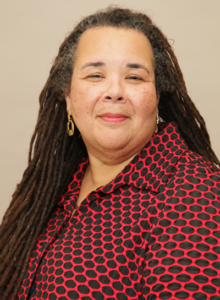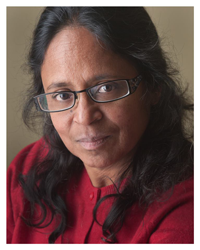racism
Select an item by clicking its checkbox
The intent of racism is to dehumanize. Consequently, a prevalent strategy of racism is to convince caring people that non-white people are lacking - lacking in values, lacking in character, lacking in abilities, lacking in that which makes for good community, good neighbors, good teachers. Racism teaches that non-white people ...

Disrupting the Culture of Silence: Confronting Gender Inequality and Making Change in Higher Education
Date Reviewed: February 4, 2016
As an African American female associate professor in religious studies, I heard my voice and I felt heard as I read many of the essays in this book. It is intentionally intersectional, addressing race and ethnicity (and to some degree sexual preference) as well as gender. The editors and authors are scholars and administrators in the field of sociology, generally. With this book they interrupt the culture of silence in higher education, which remains the gendered domain of white males where women continue to experience inequality.
Case studies, personal narratives and experiences, qualitative (interviews) and quantitative research raise readers’ consciousness about oppressive structures and cultures that impact women in academe. Women have made gains in the academy in terms of their increased presence, but major challenges remain. In this sourcebook each essay builds on existing research and offers suggestions for changing oppressive structures and cultures.
The book is divided into five parts, each ending with a case study, and each chapter includes a list of resources. The final chapter offers models for engendering change. The book was born among scholars concerned with bringing together service, scholarship, and activism. While much is said about women faculty in general, a number of essays focus on nonwhite women and specifically black women as the “double minority” in the academy. They are less likely to be mentored, promoted to full professor, granted tenure, and more likely to leave the academy.
Part One addresses problematic structures, such as exclusionary practices (lower wages and less upward promotions) that require faculty action to address. Also significant are the horizontal impediments to shattering the glass ceiling and not just the vertical ones (increasing numbers of women). Another example is the uneven, inequitable service burden placed on women and the accompanying fairy tale advice to ‘Just say no to service,’ which only “exacerbates gender-blind sexism in academia.” In the latter case the author suggests that institutions “just don’t ask” unless they are prepared to acknowledge and reward women’s service labor. Part Two discusses the dissonance between structures and cultures. Often structures like institutional quotas and commitments to diversity work in favor of women’s presence, but institutional cultures are resistant, hostile, violent, and unhelpful. Part Three addresses exclusionary cultures, including those that protect disciplinary canons, perpetuate the white male as the “ideal professor,” and value problem portable over problem-based research, which devalue women and the interdisciplinary work of nonwhite women. Part Four discusses “chilly climates,” “contrapower harassment,” incivility, microaggressions, and mobbing that are pervasive and often unchecked. These behaviors have greater negative impact on women with consequences for their physical and emotional well-being and job productivity. One author suggests that women of color consider a “trauma-to-transformation” model that involves redefining self, brain detoxification, sense-making, and reconfiguring the social reality.
I highly recommend this book to institutions that value diversity (without which academic excellence does not exist) and desire to create a healthy, productive environment for a truly diverse and representative faculty and administration. I also recommend it for female and male faculty and administrators impacted by cultures of silence and who are interested in disrupting and dismantling those cultures.
Teaching for racial equality, and against oppression, has meant coming to grips with what my adult students (domestic and international) do not know, i.e. the basic concepts of race and the mechanisms of racism in the United States. Teaching about racial violence, domination and hatred invariably means asking students ...
Shortly after the verdicts in the Ferguson and Staten Island police beating cases led to protests via social media and demonstrations across the country, I found myself involved in two conversations. The first occurred with a car mechanic in Saratoga Springs, the small rural New York community where I work. ...

Black Faculty in the Academy: Narratives for Negotiating Identity and Achieving Career Success
Date Reviewed: July 15, 2015
The editors and selected contributors provide cogent insights on navigating academic environments as faculty of color. Critical Race Theory (CRT) is a conceptual and methodological lens to identify issues of racial incongruity (1). The strength of this volume of 13 chapters is the use of first-person Scholarly Personal Narratives (SPN) by contributing black scholars to analyze particular experiences and modes for survival, if not reform in educational institutions (3). In the introduction, editors Truitt and Bonner review the evolution of CRT to conceptualize “core thematic trends” (4) that collectively structure the narrative content and divide the volume into three parts.
Part 1 is titled “Black Faculty: Navigating Daily Encounters with Racism.” Chapters 2 through 5 are narratives on interpersonal experiences in institutional climates. In chapter 2, Giles details CRT to analyze presumptive behaviors encountered since his formative years to his current professorial appointment. Moore focuses on racial microaggressions in chapter 3 (24) to note environmental similarities of his upbringing in a predominately white community and his exposure to social systems in the work environment at a predominately white academy. Lewis co-authors chapter 4 to highlight “insider-outsider experiences” (33) as a British black man, while Helm highlights her duality in America as black female navigating racialized gender stereotypes that undermine professional credibility (35). In chapter 5, Shavers, Butler, and Moore cite “cultural taxation” (42), a phenomena of commodification risks for underrepresented black faculty confounded by excessive service project requirements as token institutional representatives.
In Part II, “Black Faculty, Meaning Making through Interdisciplinary and Intersectional Approaches,” chapters 6 through 9 offer multidisciplinary intersectional approaches to recognize formal institutional rules and navigate informal expectations. Five contributors to chapter 6 – marbley, Rouson, Li, Huang, and Taylor – use a multiple theoretical lens to assess microaggression in performance-compliance to diversity expectations, parity of scholarship praxis, and tenure requirements. Croom and Patton overlay “critical race feminism” (66) onto CRT analysis in chapter 7 to identify dynamics that black female academicians encounter from black and white colleagues. Similarly, in chapter 8, Andrews details institutional macroaggressions and interpersonal microaggressions (80) that hinder female scholars’ inclusion in tenure-track aspirations unless support of professional identity and authenticity is cultivated. Stewart shares nuanced sexuality challenges in chapter 9 as an “outsider-within” (95) where her triadic identities, black, female, and queer are stereotyped tropes for discrimination and invisibility in the academy.
Finally, Part III, “Back Faculty, Finding Strength through Critical Mentoring of Relationships” includes that focus on mentor relationships as supportive modes of self-reflection and networking. In chapter 10, Flowers relays a critical need for candid self-reflection with trusted allies as mentors outside institutions if not found within. Smith asserts in chapter 11 that tenure does not guarantee collegial inclusion, respect, or appointment to leading roles; still, attentiveness to self-esteem, persona perceptions, and cultivating allied mentors helps to build critical social capital (117). Finally, chapters 12 and 13 focus on developing mentor relationships with students as Bonner recalls mentor influences as a student that inform his thematic roles as a faculty mentor to students (123). In the final chapter, Tomlinson-Clarke also urges faculty-student relationship with relational mentoring lessons as a graduate student in a historically black college (HBCU) and as a doctoral student in a predominately white university (PWI).
In summary, Black Faculty in the Academy is not a prescriptive behavioral guide of dos and don’ts; rather, the diverse analyses of lived experiences with recommendations provide avenues for readers to construct reflective assessment of present individualized situations. As an African American professor, I resonated with the narratives as discernment tools for success. The book also provides a starting point for collective institutional discourse; however, in my opinion, the volume would benefit from a section of narratives by non-black faculty who acknowledge critical race theory issues that require discourse in institutional settings where non-black colleagues might otherwise be defensive to the critique of the book’s black contributors. Nevertheless, for new faculty of color as the likely primary readers, this volume offers powerful insights of CRT to raise awareness and encourage development of contextual navigation strategies.

